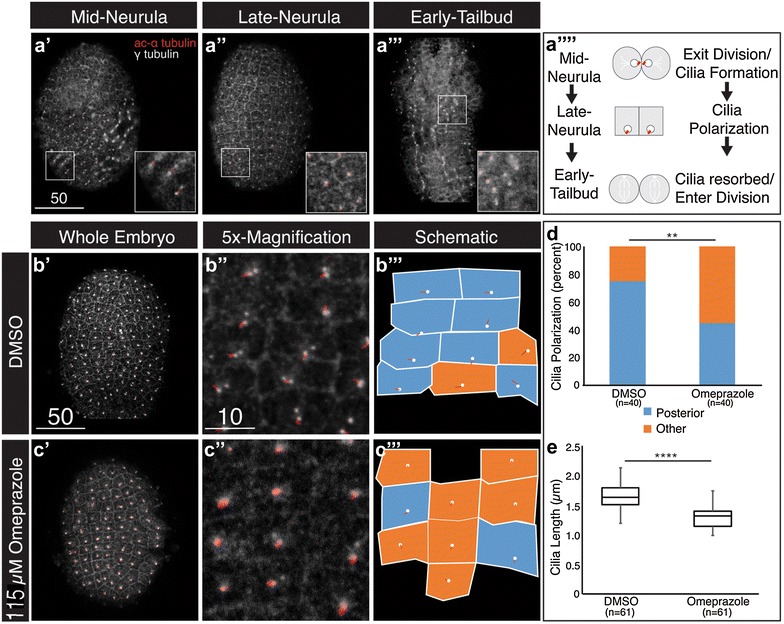Fig. 3.

Ion flux regulates ciliogenesis in the neurula epidermis. a–c Confocal images of neurula and tailbud stage embryos stained with antibodies against acetylated alpha-tubulin (red) and gamma-tubulin (white) to demarcate ciliary microtubules and centrioles, respectively. a′–a‴ Insets show magnification of selected regions. a′′′′ Schematic showing cilia positioning during mid-neurula to early tailbud stages. b′–c′ Typical cilia positioning in neurula embryos (Stage 16) treated with DMSO (b′) or omeprazole (c’) at Stage 14. b″–c″′ Magnified views (b″, c″) and schematic illustrations (b′″, c′″) of cilia positioning. Blue coloration indicates posteriorly polarized cilia, and orange coloration indicates lack of posterior polarization (see “Methods” for details on scoring). d Graphical representation of data on cilia polarization in DMSO- and omeprazole-treated embryos. Colors correspond to (b′″, c″′), n = number of cells scored from seven embryos over two independent trials. Chi-square derived P value (0.006) for comparisons between DMSO versus Omeprazole-treated embryos. e Average cilia length in DMSO- and omeprazole-treated embryos. Box-and-whisker plot is shown. n represents the number of cells scored in seven embryos over two independent trials; Wilcoxon rank sum test was used to derive P value (3.3E−14) for comparisons between DMSO- versus omeprazole-treated embryos. In all images, anterior is up. Scale bars are in micrometers
